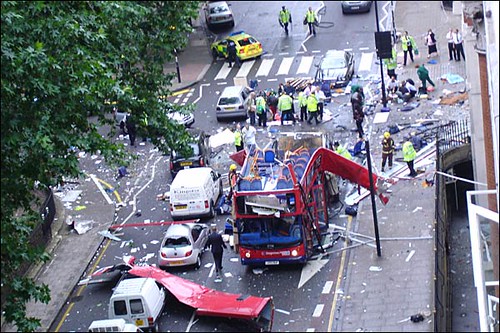The London bombings occur.
On Thursday 21 July 2005, four attempted bomb attacks disrupted part of London’s public transport system two weeks after the 7 July 2005 London bombings. The explosions occurred around midday at Shepherd’s Bush, Warren Street and Oval stations on the London Underground, and on a bus in Bethnal Green. A fifth bomber dumped his device without attempting to set it off.
Connecting lines and stations were closed and evacuated. Metropolitan Police later said the intention was to cause large-scale loss of life, but only the detonators of the bombs exploded, probably causing the popping sounds reported by witnesses, and only one minor injury was reported. The suspects fled the scenes after their bombs failed to explode.
On Friday 22 July, CCTV images of four suspects wanted in connection with the bombings were released. Two of the men shown in these images were identified by police on Monday 25 July as Muktar Said Ibrahim and Yasin Hassan Omar The resultant manhunt was described by the Metropolitan police commissioner Sir Ian Blair as “the greatest operational challenge ever faced” by the Met. During the manhunt, police misidentified Jean Charles de Menezes as one of the suspected bombers and shot and killed him.
By 29 July, police had arrested all four of the main bombing suspects from 21 July attempted bombings. Yasin Hassan Omar was arrested by police on 27 July, in Birmingham. On 29 July, two more suspects were arrested in London. A fourth suspect, Osman Hussein, was arrested in Rome, Italy, and later extradited to the UK. Police also arrested numerous other people in the course of their investigations.
On 9 July 2007, four defendants, Muktar Said Ibrahim, 29, Yasin Hassan Omar, 26, Ramzi Mohammed, 25, and Hussain Osman, 28, were found guilty of conspiracy to murder. The four attempted bombers were each sentenced to life imprisonment, with a minimum of 40 years’ imprisonment.


